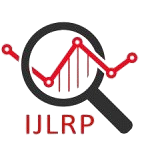
International Journal of Leading Research Publication
E-ISSN: 2582-8010
•
Impact Factor: 9.56
A Widely Indexed Open Access Peer Reviewed Multidisciplinary Monthly Scholarly International Journal
Plagiarism is checked by the leading plagiarism checker
Call for Paper
Volume 6 Issue 12
December 2025
Indexing Partners



















Data Mesh Architecture for Decentralized Fraud Detection in Large Enterprises
| Author(s) | Ravi Kiran Alluri |
|---|---|
| Country | United States |
| Abstract | The increasing complexity of fraud in large enterprises, particularly in financial and transactional ecosystems, necessitates a scalable, agile, and distributed detection approach. Traditional centralized fraud detection architectures struggle to keep pace with the real-time requirements, data silos, and domain-specific fraud patterns that arise across organizational units. This paper explores the application of Data Mesh architecture as a decentralized and domain-oriented paradigm for enhancing fraud detection in large enterprises. Data Mesh shifts the ownership of data from centralized teams to domain-specific teams, treating data as a product and enabling better scalability, autonomy, and responsiveness. We propose a Data Mesh-based fraud detection model wherein each business domain—such as sales, finance, customer relations, and operations—operates as a semi-autonomous node capable of detecting fraud patterns locally while contributing to an enterprise-wide fraud intelligence network. Leveraging a federated governance model, the architecture facilitates standardized yet decentralized policy enforcement, model deployment, and cross-domain collaboration. This paper examines how data product thinking, domain-driven design, self-serve data platforms, and federated computational governance work together to create a resilient and adaptable architecture for fraud detection. The proposed methodology utilizes distributed anomaly detection algorithms, local event-driven stream processing (e.g., Apache Kafka and Flink), and inter-domain feedback loops for continuous model retraining and behavior correlation. Experimental simulations conducted on synthetic multi-domain enterprise data reveal improved time-to-detection, reduced false positives, and enhanced fraud detection in low-signal data scenarios compared to centralized models. Furthermore, the architecture demonstrates superior scalability and flexibility when integrating new domains and updating detection logic. The findings of this research indicate that Data Mesh not only democratizes access to fraud-related data but also enhances detection capabilities by aligning technical solutions with organizational complexity. This paper contributes to the growing body of decentralized AI applications in enterprises and offers actionable design patterns for implementing domain-centric fraud analytics in large organizations. Future work includes extending this architecture to incorporate privacy-preserving technologies such as federated learning and exploring its applicability in regulatory compliance frameworks |
| Keywords | Data Mesh, Decentralized Architecture, Fraud Detection, Large Enterprises, Domain-Driven Design, Data Products, Federated Governance, Anomaly Detection, Event Stream Processing, Self-Serve Data Platforms, Apache Kafka, Real-Time Analytics, Microservices Architecture, Distributed Data Ownership, Enterprise Data Fabric. |
| Field | Engineering |
| Published In | Volume 5, Issue 3, March 2024 |
| Published On | 2024-03-05 |
| Cite This | Data Mesh Architecture for Decentralized Fraud Detection in Large Enterprises - Ravi Kiran Alluri - IJLRP Volume 5, Issue 3, March 2024. DOI 10.70528/IJLRP.v5.i3.1694 |
| DOI | https://doi.org/10.70528/IJLRP.v5.i3.1694 |
| Short DOI | https://doi.org/g9v44z |
Share this


CrossRef DOI is assigned to each research paper published in our journal.
IJLRP DOI prefix is
10.70528/IJLRP
Downloads
All research papers published on this website are licensed under Creative Commons Attribution-ShareAlike 4.0 International License, and all rights belong to their respective authors/researchers.

